Family SUVs like the Kia Sportage and Hyundai Tucson are the default choice for many buyers. Offering low running costs, good practicality, decent handling and no small degree of comfort, such cars have in many instances overtaken hatchbacks to become the mainstay of modern family transportation.
The Sportage and Tucson are two great family SUVs, yet while they both fulfil similar briefs and are comparably priced (it’s worth noting that Hyundai and Kia are part of the same company), each offers its own take on the format.
Here, we compare the models side-by-side to help you decide which you should go for. Oh, and in case you’ve only ever seen the name written down rather than heard it spoken, Tucson is pronounced ‘too-sun’, rather than ‘tuckson’.
Exterior styling and colours
The current generation Hyundai Tucson was introduced in 2020, while the Sportage followed it the next year.
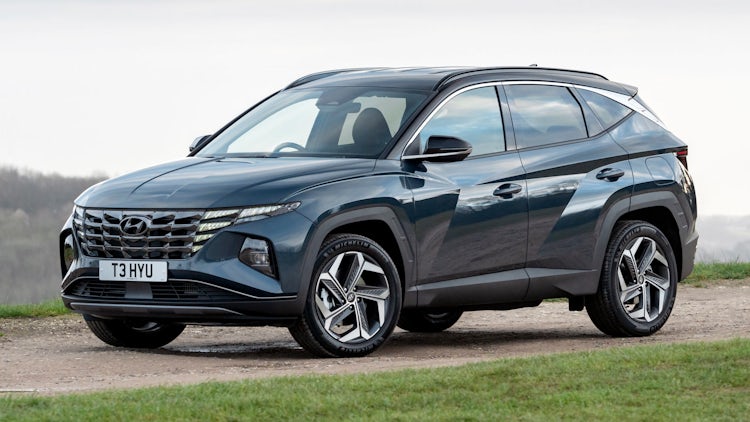
As such, both models feature modern, dramatic designs, with the Tucson’s most striking calling card being its multi-layer, intricately shaped front lights that take up much of the radiator grille. It features some pretty dramatic pressed creases in the side bodywork, too.
Not to be outdone, the Sportage’s styling is also striking, with a front-end design that’s made up more of radiator grille and air-intakes than traditional bodywork, while the arrow-shaped lights curve halfway up the bonnet.
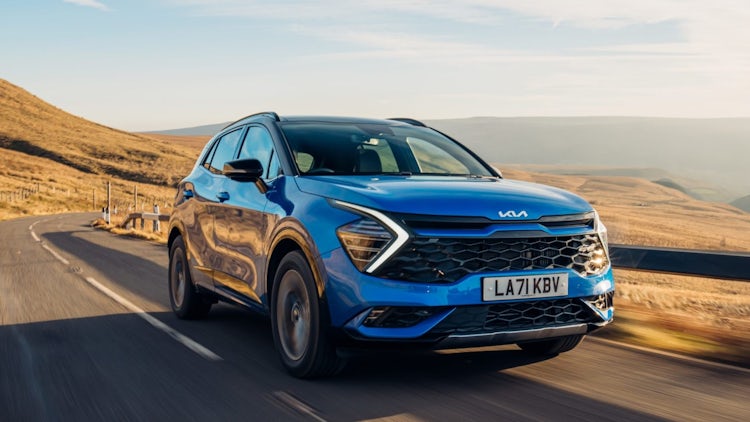
Hyundai offers the Tucson in four different shades of grey/silver, two red options (one plain, one pearlescent), two shades of white, one pearlescent black, and teal. Solid (IE non-metallic) red is standard, with solid white being an extra £300 (as of Nov 22), and the other hues costing £665
Turning to the Sportage, you can have this in fewer colours: yellow is standard, with white, grey, black and green being £650 options.
We’ll leave you to decide which car you like the looks of more, and while the Hyundai has more paint options, many of these are variations on a hue, whereas the Kia’s colours are more different from one another.
Interior and infotainment
Car interiors have come a long way over the last decade or so, and these SUVs represent two good cases in point.
The setup in the Kia comprises a set of digital dashboard dials that’s blended with the 12.3-inch central infotainment screen for a wraparound look, though this is only in higher-level trims – lesser models come with a smaller screen. Touch-sensitive controls for the heating and air-conditioning rest beneath this, while if you choose an automatic gearbox the gear selector is a rotary dial.
The Sportage starts with ‘2’ trim, before moving up to GT-Line, ‘3’, and GT-Line S. If you can stretch to the latter two trims you’ll get the larger 12.3-inch screen for the posh wraparound effect.
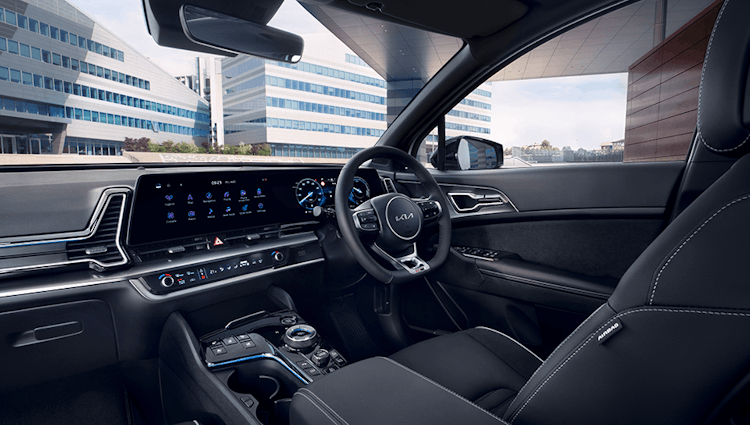
Hyundai has gone for more of a stacked design for the Tucson’s screens. There’s still a digital dashboard readout and a main infotainment screen, but the latter is separated from the former, while the heating and air-con controls are touch-sensitive buttons, and choosing which gear you want if you go for the auto is done by pressing a couple of physical buttons.
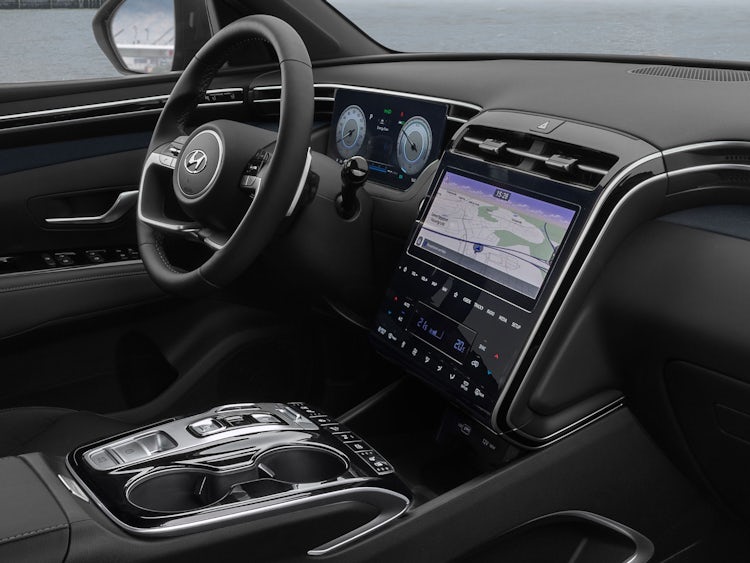
Tucson trims start with SE Connect and progress through Premium, N-Line, N-Line S and Ultimate. Look out for the larger 10.25 widescreen infotainment display on higher trims.
In terms of picking a favourite, we’d say the wraparound design of the Sportage’s interior clinches it for the Kia.
Boot space and practicality
Both the Sportage and Tucson are built on the same mechanical skeleton as each other, so offer comparable practicality. Hyundai has managed to squeeze a little more boot space out of this, with the Tucson’s cargo capacity rated at 620 litres compared to the Sportage’s 591 litres. These are both really impressive sizes, though.
Rear-seat space is good in both cars, with the rear backrests splitting three ways in a 40:20:40 combination, allowing you to blend the amount of luggage Vs passengers you can carry.
The larger boot means the Hyundai takes this round, but there’s really not much in it.
Handling and ride comfort
While some SUVs aim to cater for keen drivers with sharp steering and stiff suspension, both the Tucson and Sportage are very much aimed at prioritising comfort. That’s no bad thing, with SUVs arguably suiting relaxed rather than spirited driving.
The Sportage has slightly lighter steering, but you’d have to try both cars in close succession to notice a huge difference, while the Tucson’s suspension is ever so slightly softer. Both are excellent motorway cruisers, though, being refined and quiet at speed.
Engines and performance
You may be noting a theme of similarities emerging, and that remains the case where engines are concerned, as the Tucson and Sportage both use 1.6-litre petrol powerplants throughout much of their respective ranges.
The Tucson comes as standard with a 150hp 1.6-litre petrol engine, while there’s also a 180hp version of the same engine. 0-62mph takes 10.3 seconds in the former and 9 seconds with the latter.
There’s also a petrol-electric hybrid that offers 230hp and brings decent economy with stronger performance, with 0-62mph taking eight seconds. Above this sits a 265hp plug-in hybrid that can officially cover 40 miles in battery mode.
The Sportage engine range is essentially the same, while no diesel option is offered with either car.
Do note that as well as the hybrid and plug-in hybrid modelas there’s also a ‘mild’ hybrid option offered with the entry-level engine on both cars. Don’t go thinking this will allow you to cruise around in electric mode at all – the ‘mild’ element effectively comes down to being a sophisticated stop-start system that can also aid with acceleration – though this makes progress usefully smoother and a little swifter, so it’s worth checking out the mild hybrid versions.
Safety and reliability
Reassuringly, both the Tucson and Sportage scored the full five stars when they were crash tested by Euro NCAP. Just to emphasise how comparable these cars are, NCAP fully tested the Tucson and applied its score to the Sportage, which it only partially tested; this is common practice with mechanically similar cars.
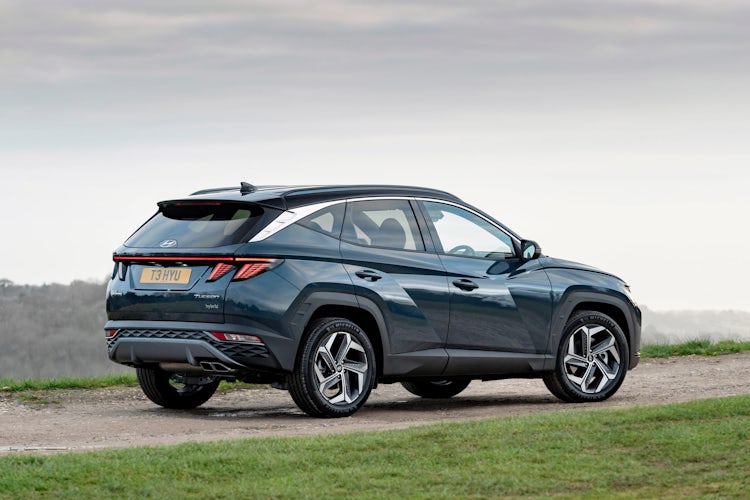
Things are comparably impressive when it comes to manufacturer guarantees. Hyundai offers a five-year warranty with unlimited mileage, while the Kia comes with a seven-year warranty with a 100,000-mile cap. These are industry leading policies and are transferable between owners – though you’ll need to have the cars serviced in-line with their respective schedules and using approved parts to preserve their warranties.
Price and running costs
Neither the Kia nor the Hyundai should break the bank to run. The Sportage’s entry-level petrol engine returns 42.2mpg and emits 154 grams per kilometre (g/km) of carbon dioxide, which puts it in the 34% tax band for company car drivers.
The mild hybrid version gets 44.1mpg and emits 146g/km of CO2 for a 33% company car tax rate. The hybrid uses a little less fuel and emits a little less CO2, but it’s the plug-in hybrid that company drivers should go for, as this emits just 25g/km of CO2, for a company car tax rate of just 8%.
These figures are broadly comparable for the Hyundai (the entry-level 1.6 model does 41.5mpg and emits 154g/km, for example), but as with all cars, pay close attention to the trim levels and precise specifications of any car you order, as different options and alloy wheel sizes affect emissions.
Road tax will be a flat £165 a year after the first year’s tax (which is bundled into on-the-road prices), though the hybrids get a £10 discount, and if you specify either car above the £40,000 mark (including options) you’ll be paying a £355 annual supplement from years two to six of the cars’ lives for a total of £520.
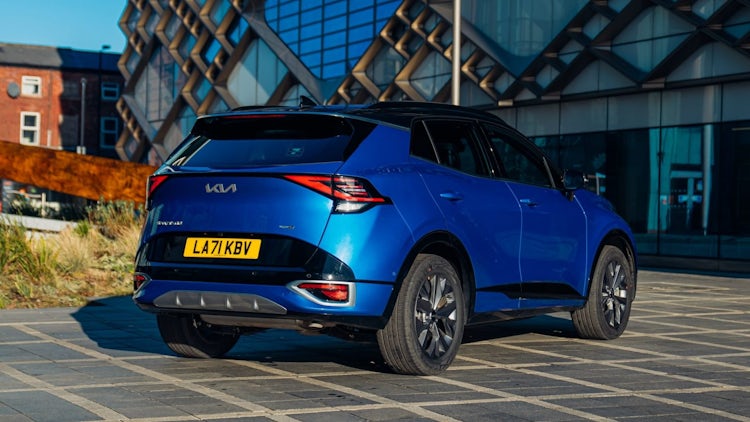
Servicing should be affordable for both cars, with package plans helping to spread the costs.
In terms of actual purchase prices, the Kia starts at £27,800 (as of Nov 22), rising to £31,000 for GT-Line, and topping out at £41,550 for the hybrid in GT-Line S trim (the PHEV has yet to go on sale).
As for the Hyundai, this starts at £29,140 for the SE Connect, rising to £30,840 for the Premium, £31,540 for the N-Line, while the Ultimate with the Tech Pack is £39,275. The standard hybrid starts at £33,370, while the plug-in model is from £39,680, with the range-topper being the PHEV ultimate with the Tech Pack, at £43,880.
Given how many points of similarity we’ve encountered so far, which car you pick may be based as much on price as anything else, which is why it’s all the more important to check out our deals on the Sportage and Tucson to see which could be on your drive for less.
Sportage vs Tucson: which one should you get?
The Kia has a lower starting price so this may swing it for you, but you’ll need to step up a couple of trim levels to get the nice widescreen setup inside, at which point that price advantage will be lost, while the same could happen when it comes to the minutiae of any finance deal you manage to strike.
We’d argue, though, that the Sportage has a slightly nicer interior than the Tucson, so it just about tops this pairing. All things considered, though, choosing between these cars is like deciding whether to have sausage and mash or fish and chips for tea: both are satisfying and likely to hit the spot.
